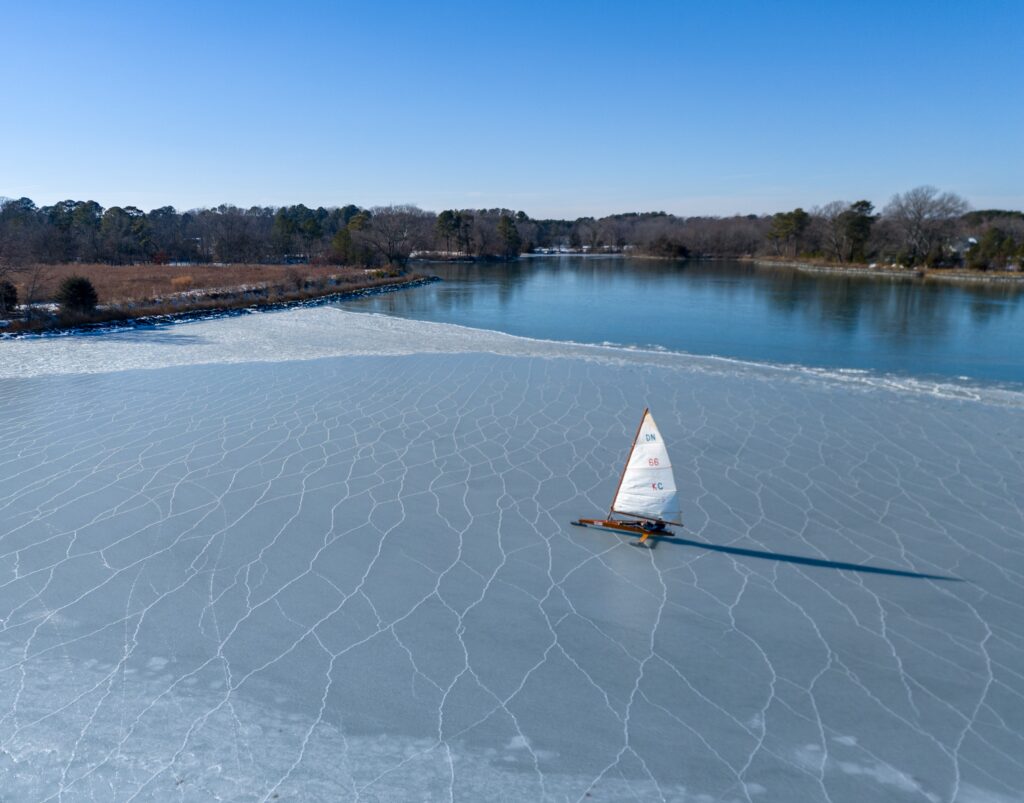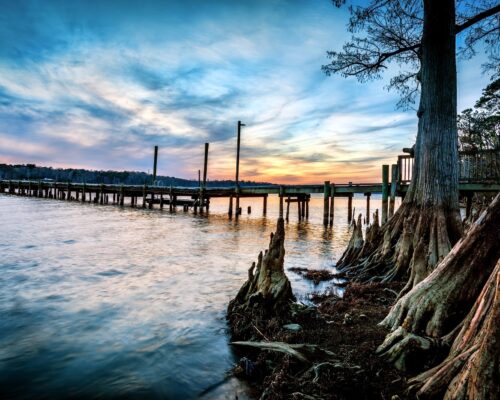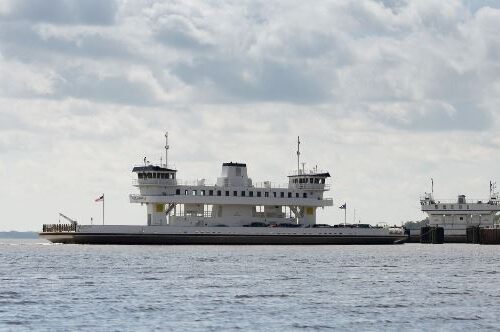This winter, the Chesapeake Bay experienced a rare environmental phenomenon. A weakened polar vortex sent a surge of Arctic air southward, locking the region in ice for a week. While most watermen were stuck at the docks for a time, unable to work, a small group of sailors seized the moment—racing across the frozen bay at thrilling speeds. Among them was Michael Keene, an Eastern Shore native who took to the ice in a way few Chesapeake boaters have ever experienced: ice boating.
Ice boats were brought to Chesapeake, specifically Talbot County, during the record-cold winter of 1977-’78, for the DN Ice Boating World Championship. The championship, originally set to take place on the Great Lakes where the majority of ice boating takes place, was moved to the Miles River on the Chesapeake, when a heavy snowfall blanketed the iced-over creeks and rivers of the Great Lakes and north.
Why the Miles, of all places? Larry Klein, the man tasked with finding a new location for the races, was close friends with Dianna Mautz, a St. Michaels resident. When Klein inquired about the ice conditions on the Chesapeake, Mautz measured the ice thickness on the river and gave the green light to host the races in St. Michaels, Maryland.
Sailors from the Midwest, Northeast, Canada, Poland, West Germany, and the Netherlands, flocked to the frozen Chesapeake. With the influx of competitors, a few locals—Dianna and her husband John Mautz, log canoe skipper Jimmy Wilson, and Vance Strausburg—quickly assembled boats to join the races. Though no locals took home the trophy, the excitement of ice boating took hold. When the championship ended, the excitement of ice boating lingered. Historian Pete Lesher wrote about the origins of ice boating for Chesapeake Bay Magazine a few years back:
A handful of boats remained in the region after that 1970s winter, waiting for the next deep freeze. Decades later, Keene is among the few keeping the tradition alive.
“The ice boat itself is a unique craft,” Keene explains. “It’s about 12 feet long with a 16-foot mast.” Unlike the stately skipjacks and log canoes that define classic Chesapeake sailing, this lightweight sled is built for pure speed. “They can hit 60 miles per hour easily,” Keene says. “The fastest I’ve gone was probably around 35 miles per hour, and it doesn’t take much breeze to get them to get going quick.” Sitting on 3 skates, with the forward blade being the steering runner, the boat glides across the ice with minimal friction. The sails catch the wind, propelling the craft forward while the sailor steers using a tiller connected to the front runner.
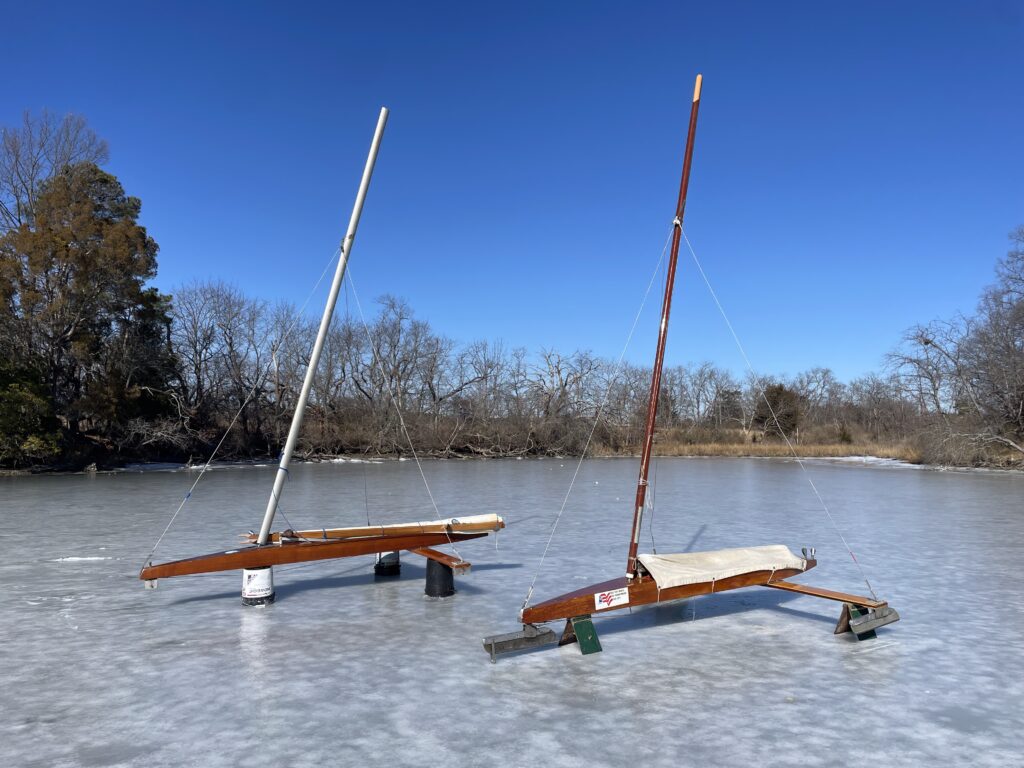
With little drag from the smooth ice, ice boats are able to reach speeds that are often several times faster than the wind itself. Weighing no more than 150 pounds plus the rider, the boat is easily able to slide across the ice with barely any breeze. “Once you get going, you’re going,” Keene says. “To stop, you let the sail all the way out and use your feet to create drag on the ice. It’s quite the rush. It’s also extremely cold,” he points out. “While sitting still, it’s not too bad, but when you’re going 20 miles per hour, it’s freezing.”
The last time the Chesapeake experienced ice thick enough for ice boating was 2018. Whenever the region gets a prolonged period of low temperatures and conditions that are conducive to freezing, Keene and the members of the Chesapeake ice boating community are ready. “The boat’s basically been ready since the last time we sailed it,” he says.
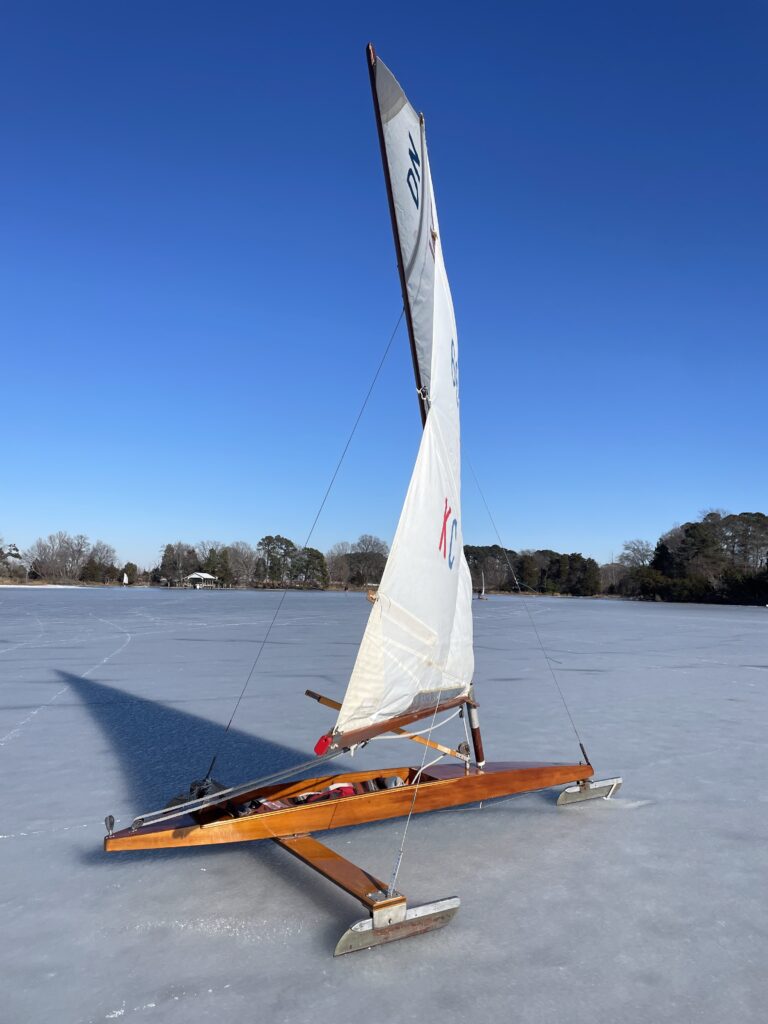
While Keene doesn’t own his own boat, he is the caretaker of the late Dianna Mautz’s boat. “[The vessel is] in great condition,” Keene says. He keeps the boat ready to launch at the first opportunity. “Every few years we get a period of time that allows for them to be used, I don’t want to spend that precious time trying to fix the boat, I want to use it.”
And use it, he does. Over the seven days that his creek was iced over, he says he went out every day for at least 5-6 hours each day. “The conditions are so rare that you have to take advantage of them. For just a few days the Bay turns into a whole new world”. On one of the days, Keene had a midday commitment, so to get his time in, he went out before sunrise.
But inevitably, the ice boating window ends. A warmer spell broke the freeze in late January, and the ice cover began to decrease around the Bay. “My heart sort of sank on the day I went down to the ice and it was all gone,” Keene says.
According to Keene, the toughest part is deciding when and where to go. Falling through the ice is an obvious concern, but they take every precaution to avoid that risk. Before preparing the boats, Keene and his crew measure the ice thickness. Using a drill and a long safety line, they walk onto the ice, spaced apart, drilling holes to test its thickness. They check the deepest parts of the water and areas farthest from land. Once it’s clear that the ice is safe, it’s time to rig up the boats.
The ice is the most difficult part of the equation to find, but even with ice, good wind is not always promised. Not enough wind and the boats won’t be able to sail. Too much wind and the boats will be overpowered, a situation that could become dangerous. Like the other historic wooden Chesapeake vessels, there is an optimal range of about 5-15 knots of breeze.
Depending on the area, the quality of the ice can differ. If the body of water freezes on a windless night, the ice will be smooth as glass, whereas if it is windier, the ice will be more coarse and rough. The smoother the ice the faster the boats will glide.
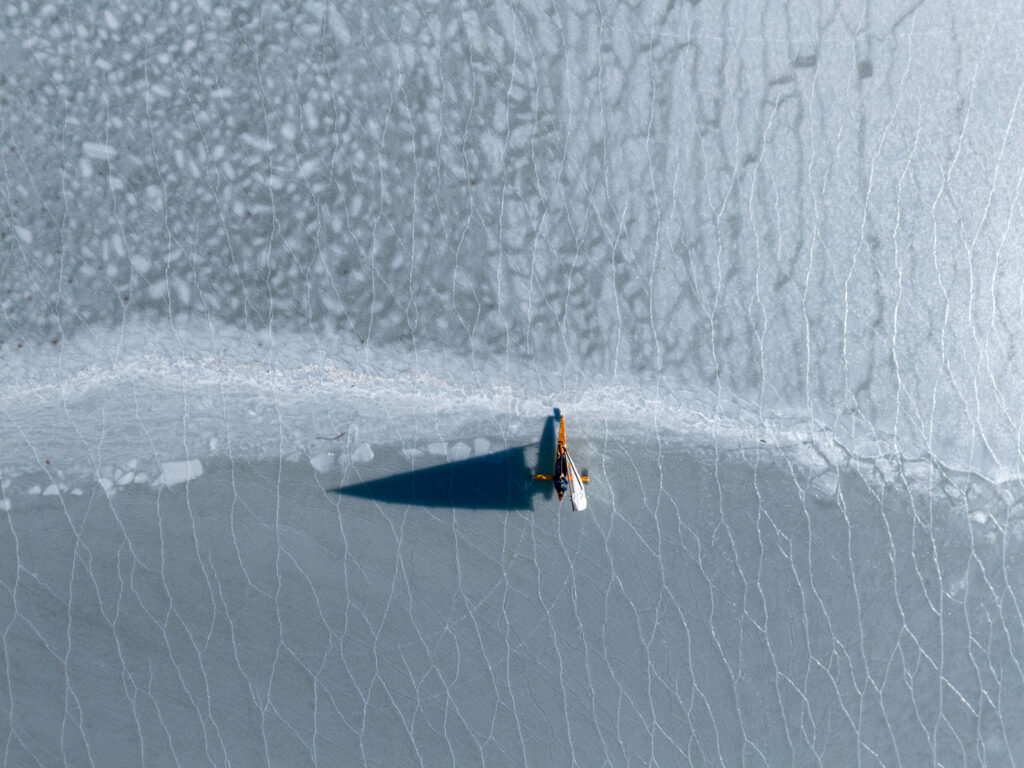
Keene says one of his favorite parts about ice boating is being able to introduce the next generations to the activity. “I probably brought 50 people along with me to try sailing the boats,” he says. “Everyone loved it”. Especially with a changing climate, It’s one of those things that can easily be forgotten, and introducing a younger generation is just one of the things that can keep the culture alive. Cole and Jack Meyerhoff and Jim Richardson, who also have iceboats, joined Keene for most days on the ice.

Caden Taylor Lewis, a young St. Michaels native, is fully immersed in the marine history of the area. He sails with Keene on Persistence, a historic log canoe, and is a shipwright apprentice at the Chesapeake Bay Maritime Museum. Lewis had helped with the upkeep of the boat and went along for a ride. After playing with the boats for the week he was hooked. “It opened up a whole new world of sailing,” he says. He is looking forward to doing it again in the future. “The boats are meant to be easy to build, and I wouldn’t mind building one to use when the conditions are right. It’s not very common in this area, only the lucky few get to experience it.”
Miles-Wye Riverkeeper Ben Ford was able to join in on the ice boating this winter, and captured stunning drone shots of the boat skating along the surface:
“As riverkeeper, I want people to be able to use and enjoy the resource, Ice boating is a really special way for people to interact and enjoy our waterways,” Ford tells us. With Shorerivers, Ford monitors river conditions year-round.
As quickly as the ice came, it was gone. The deep freeze that transformed the Chesapeake into an ice boater’s paradise lasted just a handful of days before warmer temperatures reclaimed the waterways. For Keene and the others who took to the ice, it was a rare chance to experience a tradition that, like so many others in the region, depends on forces beyond human control. “You never know when the conditions will line up again,” Keene says. “You just have to be ready when they do.”

